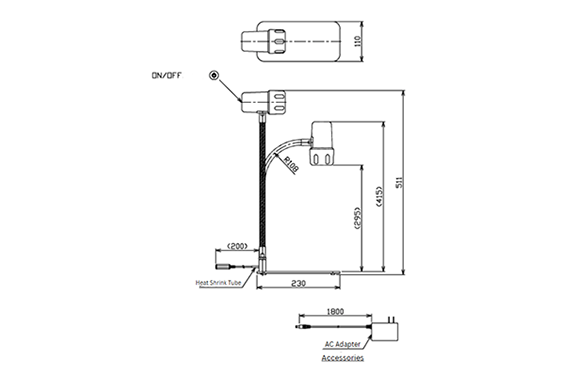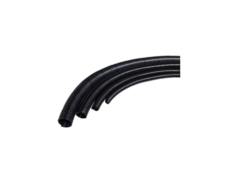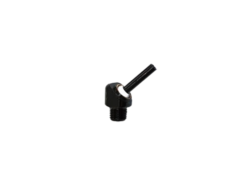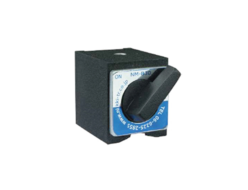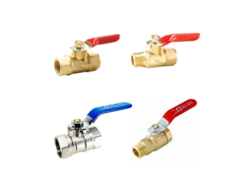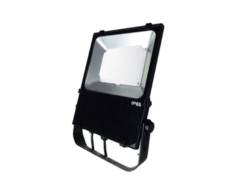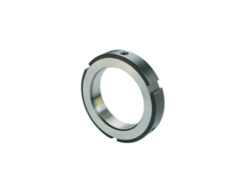Nikki Co., Ltd.
Nikki NLSS03BD4-AC LED Plant Light
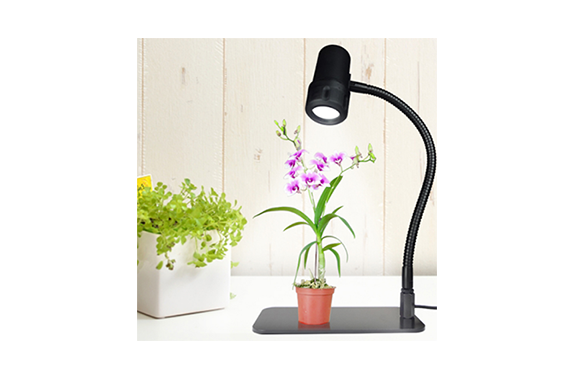
Manufacturer: Nikki Co., Ltd.
Model: NLSS03BD4-AC
Features
Why not try growing your favorite plants in your office or living room?
Through photosynthesis, plants grow, flower, bear fruit, and nurture the next life form.
The spectacle of 660nm light, which is the most active light source for photosynthesis in plants
The front of the light has a diffuser panel that provides soft light.
Electromagnetic wave reducing lighting fixtures
Uses a constant current IC circuit to provide gentle light without glare or flickering
Uses LEDs that are highly reliable worldwide.
Application Examples
Plant lights, plant growth lights, plant lighting lights, plant factories
Specification
| Compliance standards | |
|---|---|
| Total luminous flux | 430lm |
| Illuminance (1m) | 1750lx |
| wavelength | 660nm |
| power supply | AC100-240V |
| Power Consumption | 6W |
| Operating temperature | -10℃ to 40℃ (but do not freeze) |
|---|---|
| Expected Life | Operating temperature 25℃ 60,000 hours *Life is the point at which the illuminance becomes 70% of the initial illuminance. |
| Protection rating | IP65 |
| Power cable | 2m (AC/DC adapter) |
A relaxing indoor space with plantsto relieve stress while working remotely
 A relaxing indoor space with plants can help relieve stress during teleworking. It will also improve your concentration.
A relaxing indoor space with plants can help relieve stress during teleworking. It will also improve your concentration.
Plants breathe, which humidifies the air and purifies it. They also generate negative ions, which reduce formaldehyde, a substance that causes sick house syndrome, and increase relaxation and reduce stress. It
will also help you to concentrate better when teleworking.
Why not try growing your favorite plants in your office or living room?
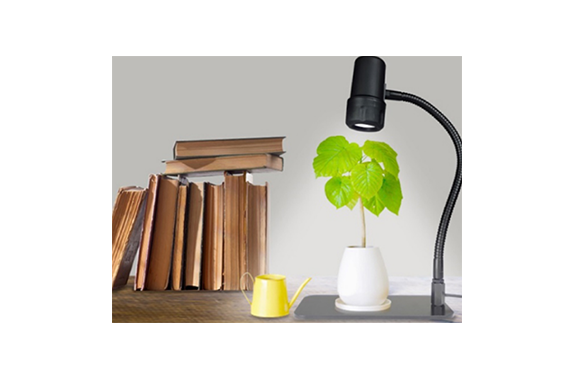 Plants grow, flower, bear fruit, and develop the next life form through photosynthesis.
Plants grow, flower, bear fruit, and develop the next life form through photosynthesis.
There are sun-loving plants that require the most sunlight, shade-loving plants that grow well in low light, and semi-shade-loving plants that are somewhere in between.
Most houseplants are shade-loving plants, and are best grown with a plant light.
The relationship between plants and light
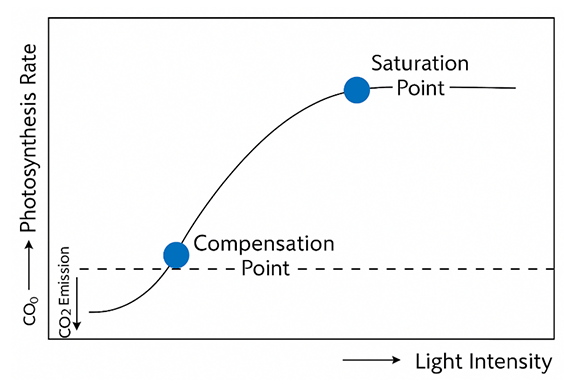 The amount of light at which photosynthesis is most active is called the light saturation point, and even if plants are exposed to more light than that, photosynthesis will not be as active.
The amount of light at which photosynthesis is most active is called the light saturation point, and even if plants are exposed to more light than that, photosynthesis will not be as active.
Plants also breathe and emit CO2. When exposed to light, photosynthesis begins, absorbing CO2 and emtting oxygen, and the point where these two intersect is called the light compensation point. Plants cannot maintain their vitality unless there is light above the light compensation point.
When you grow plants indoors, you want them to stay alive even if they don’t grow rapidly. Plant lights can provide light above the compensation point, keeping your plants alive and healthy.
Light saturation point for houseplants
The unit of light used to measure the amount of light required for photosynthesis by plants is called PPFD, and its unit is μmol.
Generally, the light compensation point for houseplants is around 10 μmol, and the light saturation point is around 300 to 500 μmol.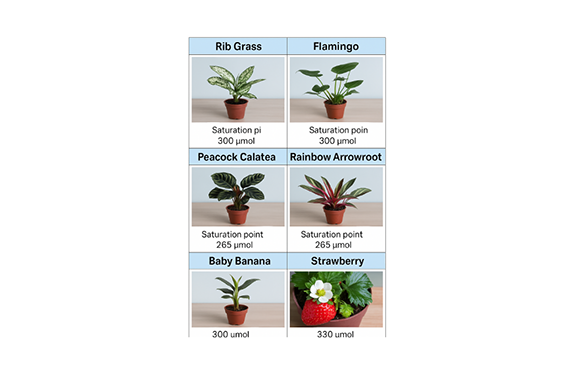
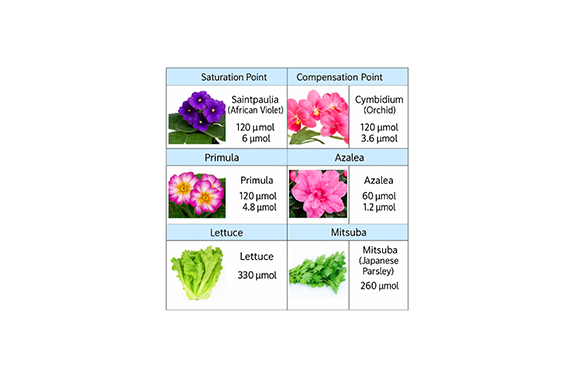
PPFD value emitted by plant lights
| Height | Axis | Distance (mm) | |||
|---|---|---|---|---|---|
| 0 | 50 | 100 | 150 | ||
| H50 | X | 500 | 300 | 130 | 55 |
| Y | 500 | 300 | 130 | 55 | |
| H100 | X | 150 | 110 | 90 | 60 |
| Y | 150 | 110 | 90 | 60 | |
| H150 | X | 95 | 55 | 50 | 40 |
| Y | 95 | 55 | 50 | 40 | |
Note: Values are based on our company’s measurements and are for reference only.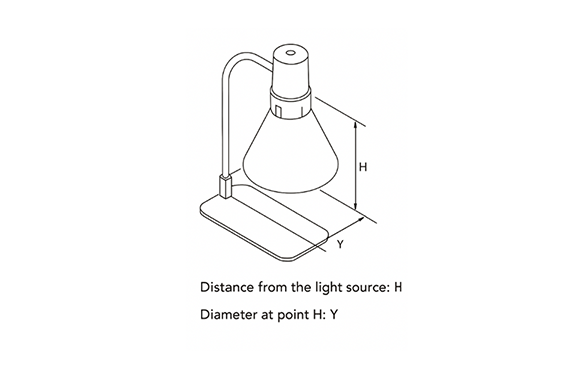
The NLSS03BD4-AC emits light that is above the light saturation point for most houseplants.
Houseplants give off a vibrant and lively appearance.
Please enjoy it.
Wavelength of light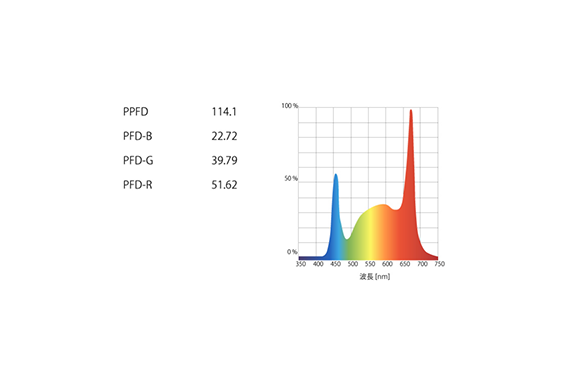
There is a lot of light in the 660nm (red) wavelength range, at which plants are most active in photosynthesis, and the 450nm (blue) wavelength range, which promotes the growth of leaves and other plants.
Standard Model List
| Model | Total luminous flux | Illuminance (1m) | Wavelength | Power supply | Power Consumption |
| NLSS03BD4-AC | 430lm | 1750lx | 660 nm | AC100-240V | 6W |

